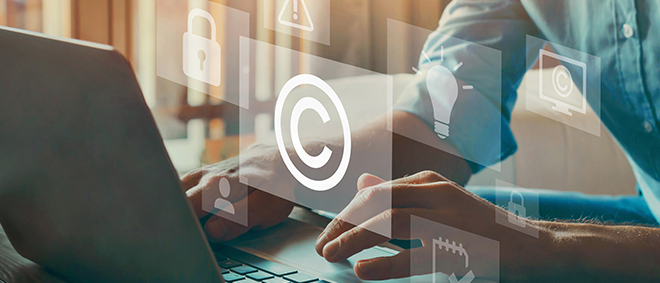The U.S. Copyright Office (“Office”) has published guidance on its policy and practices for examining and registering works that contain material generated by the use of artificial intelligence technology. Some of the key points include the following:
- Copyright can protect only material that is the product of human creativity – the term “author,” which is used in both the Constitution and the Copyright Act, excludes non-humans
- In the case of works containing AI-generated material, the Office will consider whether the AI contributions are the result of “mechanical reproduction” or instead of an author’s “own original mental conception, to which [the author] gave visible form.” The answer will depend on the circumstances, particularly how the AI tool operates and how it was used to create the final work
- If a work’s traditional elements of authorship were produced by a machine, the work lacks human authorship and the Office will not register it (e.g., when AI technology receives solely a prompt from a human and produces complex written, visual, or musical works in response)
- In cases where a work containing AI-generated material also contains sufficient human authorship to support a copyright claim, copyright will only protect the human-authored aspects of the work, which are “independent of” and do not affect the copyright status of the AI-generated material itself (e.g., a human may select or arrange AI-generated material in a sufficiently creative way that the resulting work as a whole constitutes an original work of authorship or an artist may modify material originally generated by AI technology to such a degree that the modifications meet the standard for copyright protection.)
- This policy does not mean that technological tools cannot be part of the creative process – what matters is the extent to which the human had creative control over the work’s expression and “actually formed” the traditional elements of authorship
- Applicants have a duty to disclose the inclusion of AI-generated content in a work submitted for registration and to provide a brief explanation of the human author’s contributions to the work
- Individuals who use AI technology in creating a work may claim copyright protection for their own contributions to that work and describe the authorship that was contributed by a human.
- Applicants should not list an AI technology or the company that provided it as an author or co-author simply because they used it when creating their work.
- AI-generated content that is more than de minimis should be explicitly excluded from the application.
- Applicants who have already submitted applications for works containing AI- generated material should check that the information provided to the Office adequately disclosed that material. If not, they should take steps to correct their information so that the registration remains effective. For applications that have already been processed and resulted in a registration, the applicant should correct the public record by submitting a supplementary registration.
- Applicants who fail to update the public record after obtaining a registration for material generated by AI risk losing the benefits of the registration. If the Office becomes aware that information essential to its evaluation of registrability “has been omitted entirely from the application or is questionable,” it may take steps to cancel the registration.
- The Office recognizes that AI-generated works implicate other copyright issues not addressed in this statement. It has launched an agency-wide initiative to delve into a wide range of these issues. Among other things, the Office intends to publish a notice of inquiry later this year seeking public input on additional legal and policy topics, including how the law should apply to the use of copyrighted works in AI training and the resulting treatment of outputs.
